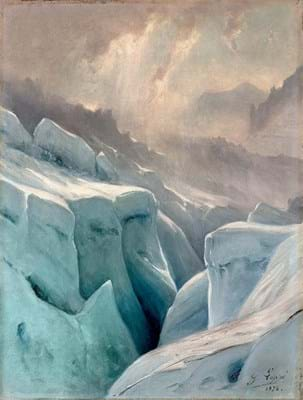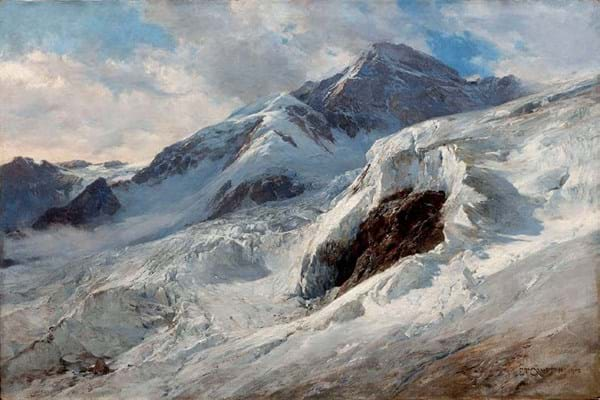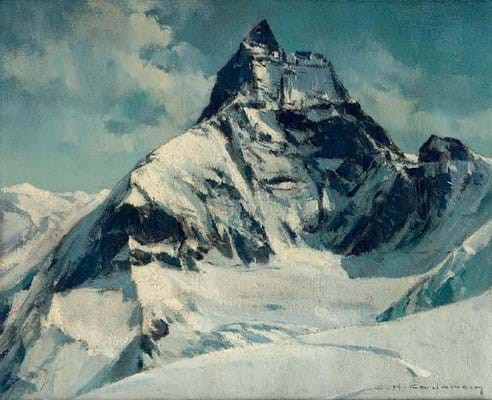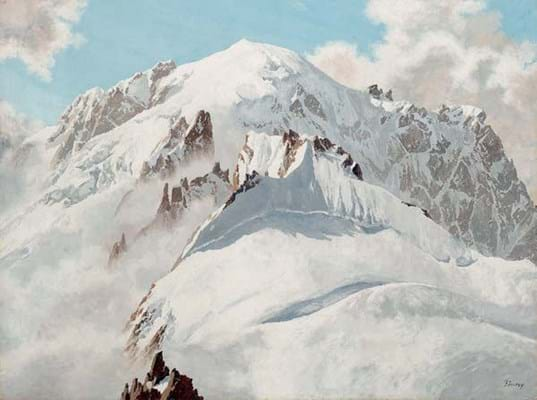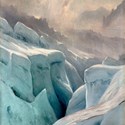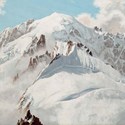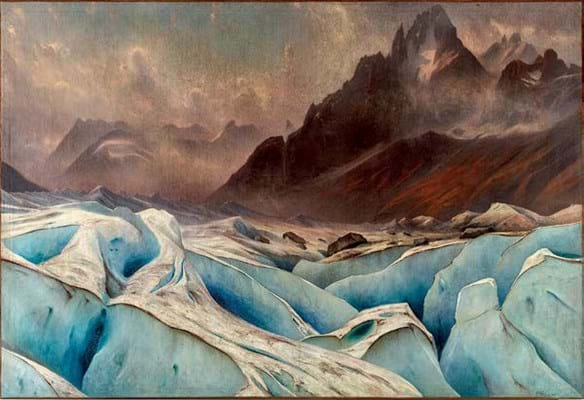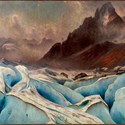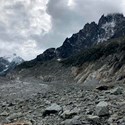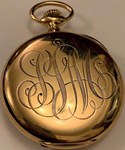The exhibition, which takes place at John Mitchell Fine Paintings in Mayfair until March 6, comprises 50 mountain views by generations of intrepid peintres-alpinistes from the mid-1800s to the present.
Chief among these figures are Edward Compton (1849-1921) and Gabriel Loppé (1825-1913), pioneers in both mountaineering and recording the peaks en plein air.
When Mitchell staged the first edition of this exhibition in 2001 (at that point a loan show for the Alpine Club in London), works by Compton and Loppé were comparatively easy to find.
“I used to be able to pull out six or seven Comptons,” he says, but these days, the supply is shrinking in a way the dealer compares to the Old Masters market.
“I’ve been specialising in Loppé and Compton for the past 20 years and I have only one painting by each in this exhibition.”
Prices, he adds, correspond to supply.
Unrecorded painting
The star piece is a previously unrecorded oil painting by Compton. The Lyskamm from the Gnifetti Hut, Valais, Switzerland, offered for £125,000, is signed and dated 1902.
This English-born German artist was an independent soul, climbing 300 peaks in his lifetime, 27 of which were first ascents. During his career he is thought to have recorded more peaks in the Alps than any other painter.
His works are highly collectable and several appear in the Alpine art museums owned by contemporary climbing legend Reinhold Messner.
“Compton could really understand rocks,” Mitchell says, “Whereas Loppé could paint ice, particularly the jellied depths of a crevasse.”
Loppé is represented in the show by his oil Crevasses on the Glacier du Géant, Chamonix, France, priced at £65,000.
It was painted in the mid-1870s and reflects the artist’s fascination with the inner workings of glaciers.
Loppé, like Compton, was self-taught and climbed constantly, but was more sociable. Tantalisingly, though the two were both members of the Alpine Club, there is no evidence that their paths ever crossed.
Lots of options
Plenty of work by other artists is also on offer, including Alexandre Calame (1810-64), Charles-Henri Contencin (1898-1955) and Jacques Fourcy (1906-90) as well as Contemporary artists Michael Hart and James Hart-Dyke.
Buyers tend to go for scenes they recognise from their travels and Mitchell is careful to balance the supply of remote landscapes with more recognisable peaks, such as the Matterhorn.
Particularly popular, according to the dealer, are the pictures with some sign of human presence, whether a distant group of climbers or a small shepherd’s hut.
Summer views are available as well as snowy scenes. Sometimes the mountains are seen over lakes or snowy rooftops.
Topgraphically sound
The most important quality for inclusion in the show is accuracy.
“There’s no fantasy or artistic licence here. These pictures are all topographically sound,” says Mitchell.
A keen mountaineer in his own right, he uses his Alpine expeditions in part as research missions, tracking the specific locations recorded by artists as much as 150 years ago.
He supplements his research poring over maps and looking at images online to match up past and present scenes.
Comparing the same scenes, past and present, is a reminder of how the landscape has changed. Snow caps have shrunk, winters and summers are warmer.
The ‘Nose’ of Compton’s Lyskamm has lost most of its cover today, and the basin of the Lys glacier in the foreground has gone.
“I didn’t set out to be a climate change exhibitor,” Mitchell says. “Twenty years ago we knew glaciers were receding but we didn’t know to what extent.”
Talking about Loppé’s glacier view, he adds: “When he painted that there was no reason for him to exaggerate a single crevasse or single bit of snow or ice…the one thing he could not have believed was that this would be gone in 150 years.”


